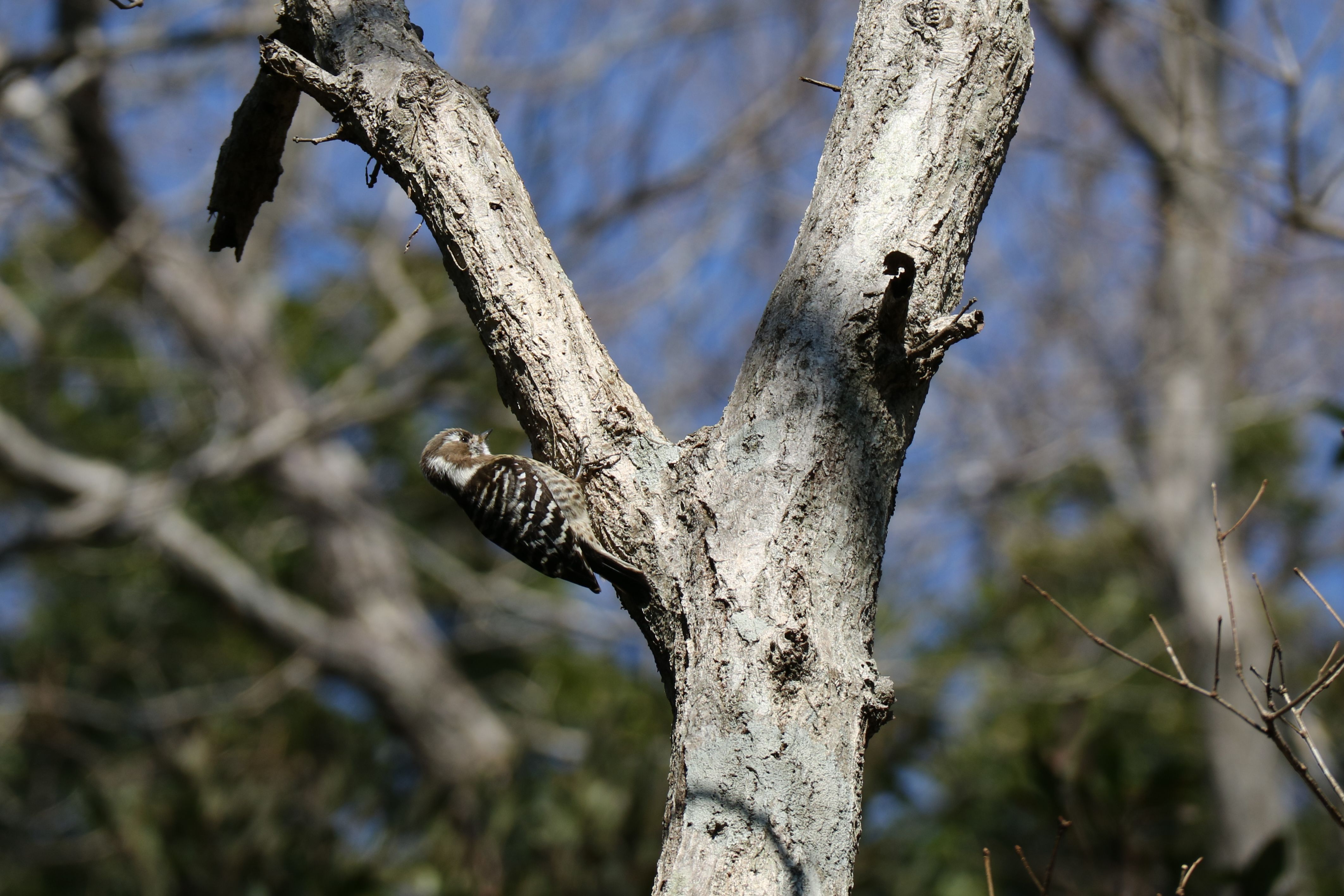Seasonal Attractions
- TOP
- Nature at Yokoyama View Point and Park
- Seasonal Attractions
Seasons of Yokoyama: Spring
Spring is a season of renewal. In a mostly evergreen forest like Yokoyama, spring is when trees shed old leaves and come alive with new growth. Trees like the Japanese bay (tabunoki) and red bayberry (yamamomo) sprout new leaves that range in color from pale green and yellow to vivid purple and crimson, and the forests seem full to bursting with colorful new foliage.
Spring is also the season of flowering. In March and April, cherry (sakura) trees bloom on the forested hillsides, by Soyokaze Terrace, and in the Cherry Blossom Garden in the Sozo-no-Mori area. From April to May, three-leaved azaleas (koba-no-mitsuba-tsutsuji) create splashes of vivid pink throughout the forest, and ubame-gashi oaks display their modest green blossoms. Wisteria and violets contribute to the spring palette as well.
As the weather warms, the birds and insects of Yokoyama become more active. Birds like the Japanese white-eye (mejiro) sing mating songs that are distinct from their birdsong in other seasons. The first haru-zemi cicadas emerge, adding their slow, rhythmic calls to the chorus.
In the ponds and wetlands of Sozo-no-Mori, spring is when the first Japanese skimmer dragonflies (shioya tonbo) appear. Beneath the surface of the ponds, brown frog (aka-gaeru) tadpoles begin to hatch.

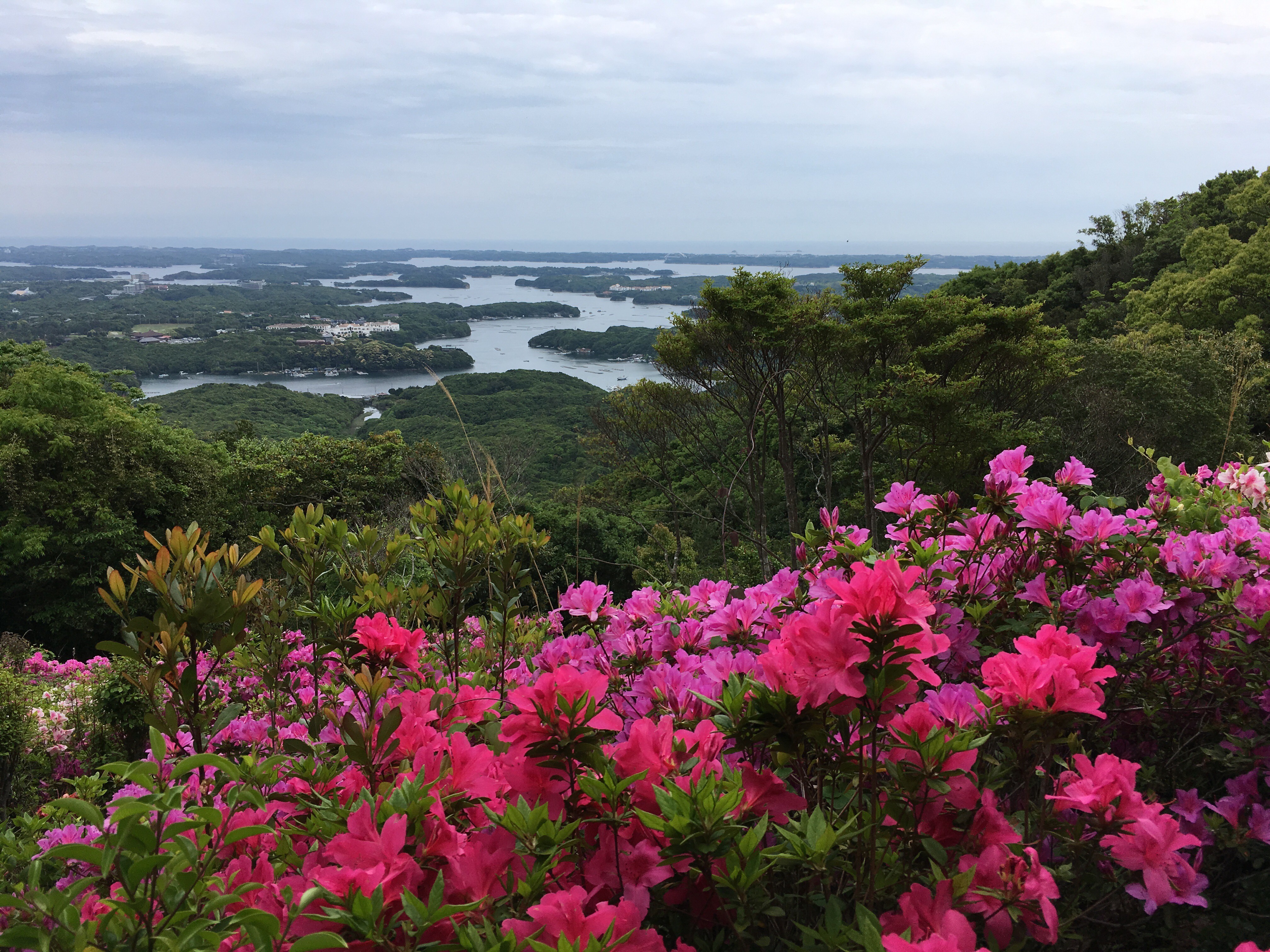
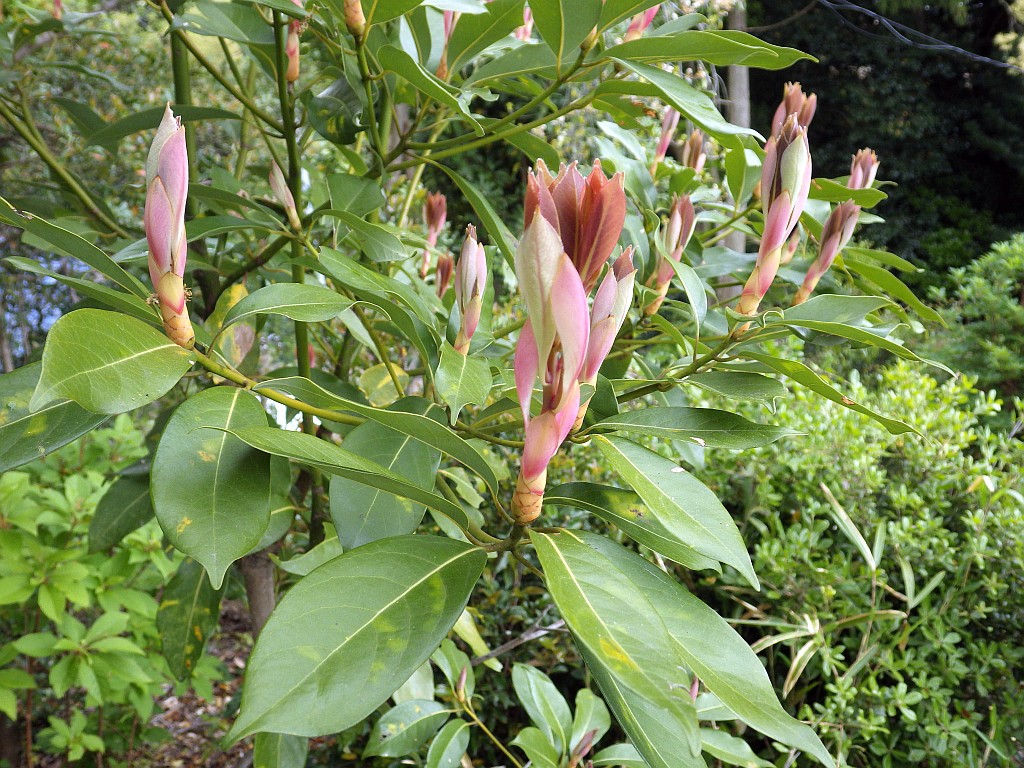
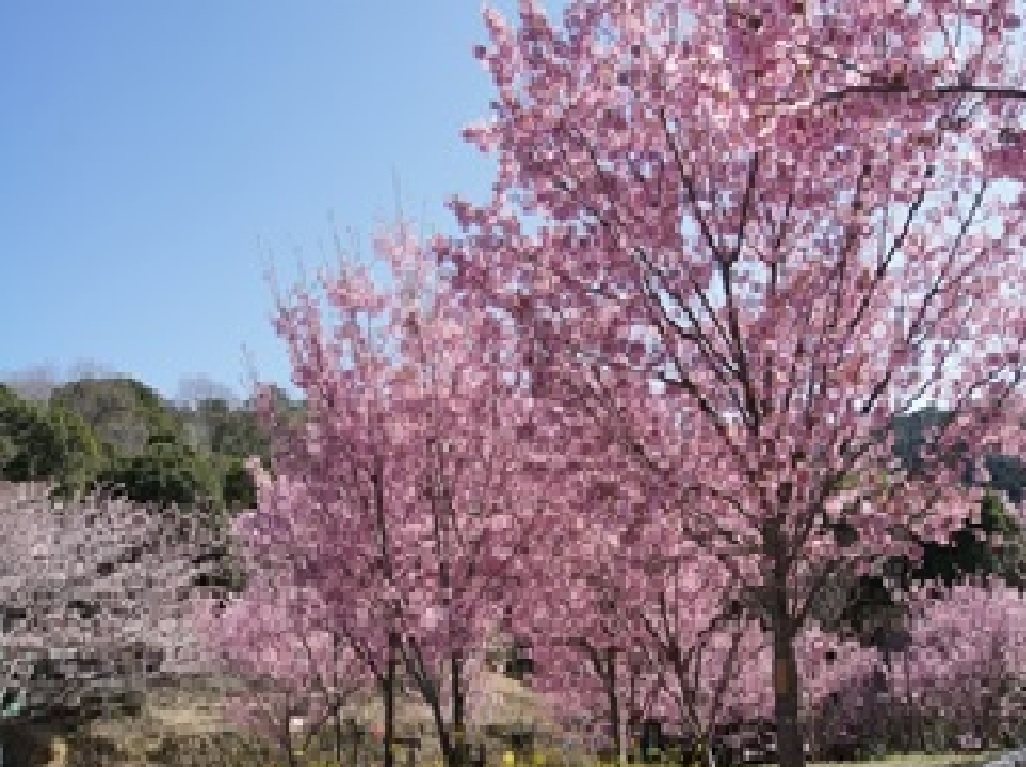
Seasons of Yokoyama: Summer
Summer is the season of saturation in the Yokoyama area. The sky is deep blue, the forest a vivid green, and the air is thick with humidity and the buzz of cicadas. However, a cooling breeze off Ago Bay alleviates the heat on Yokoyama Tenkū Café Terrace and the other observation decks, and the walking trails are shaded by the forest canopy overhead.
Trees and shrubs that bloom in the forest between spring and summer include yellow and white gardenias (kuchinashi), pink harlequin glorybowers (kusagi), Japanese clethras (ryobu) with sprays of white blossoms, and the pink silk trees (nemunoki) not far from Yokoyama Tenkū Café Terrace. As the rainy season approaches, vibrant hydrangeas (ajisai) also emerge, most notably along the carefully cultivated Hydrangea Walk in the Sozo-no-Mori area.
Insects thrive in the hotter months. Beetles inhabit the trees, among them the Japanese rhinoceros beetle (kabutomushi) and several kinds of stag beetle (kuwagata). Dragonflies like the golden-ringed dragonfly (oni yanma), Japan’s largest, and the colorful blue-tailed forest hawk (oshiokara tonbo) dart through the air in search of prey. When the incessant buzz of the daytime cicadas subsides, the plaintive cry of the evening cicada (higurashi) takes its place, completing the classic Japanese summer soundscape.
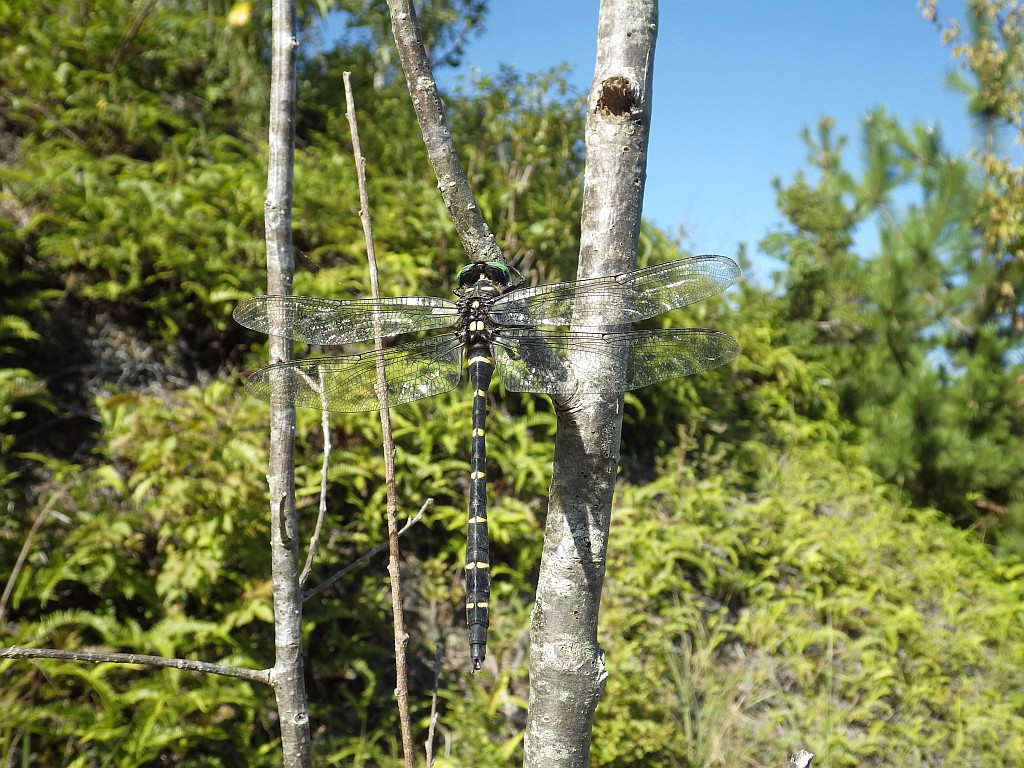
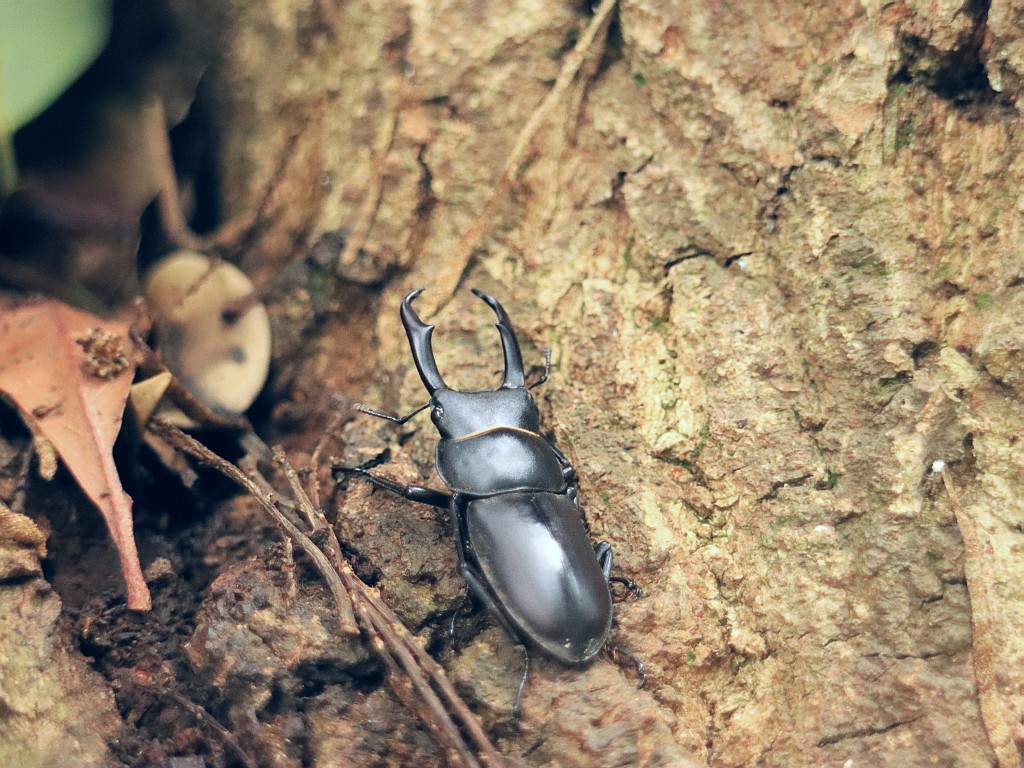

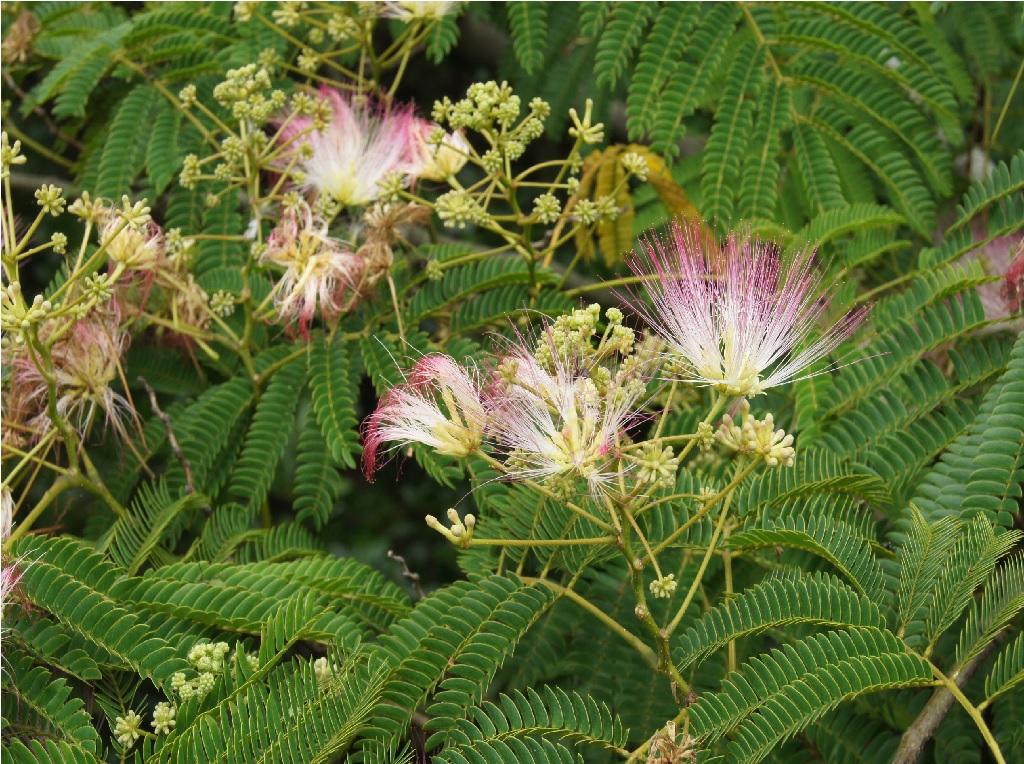
Seasons of Yokoyama: Autumn
Autumn does not truly reach Yokoyama until November, when the encroaching cold finally overcomes the mild climate and the effect of the warm Kuroshio Current. Although the forest is mostly evergreen, a few deciduous trees and shrubs display red and gold autumn foliage.
As the haze and humidity of summer fade, the sky seems to recede, filled with drifting cirrocumulus clouds. Migratory birds pass by overhead, among them the flocks of gray-faced buzzard-eagles (sashiba) heading south for the winter. Closer to the ground, chestnut tiger butterflies (asagi-madara) make their way through the park to warmer climes.
A few plants blossom in autumn, like the leafy lespedeza (maruba hagi) that blooms with tiny pink flowers. These bushes line much of the walk from the Visitor Center to Yokoyama Tenkū Café Terrace. Autumn is also when the many varieties of oak in Yokoyama drop their acorns. Discerning collectors might find more than half a dozen distinct varieties.
Sounds carry further in the cool, still autumn air, and the chirping of katydids (kirigirisu) and crickets (koorogi) forms a chorus as evening falls. Autumn is also the breeding season for deer (shika), when the calls of bucks echo through the nearby forest.
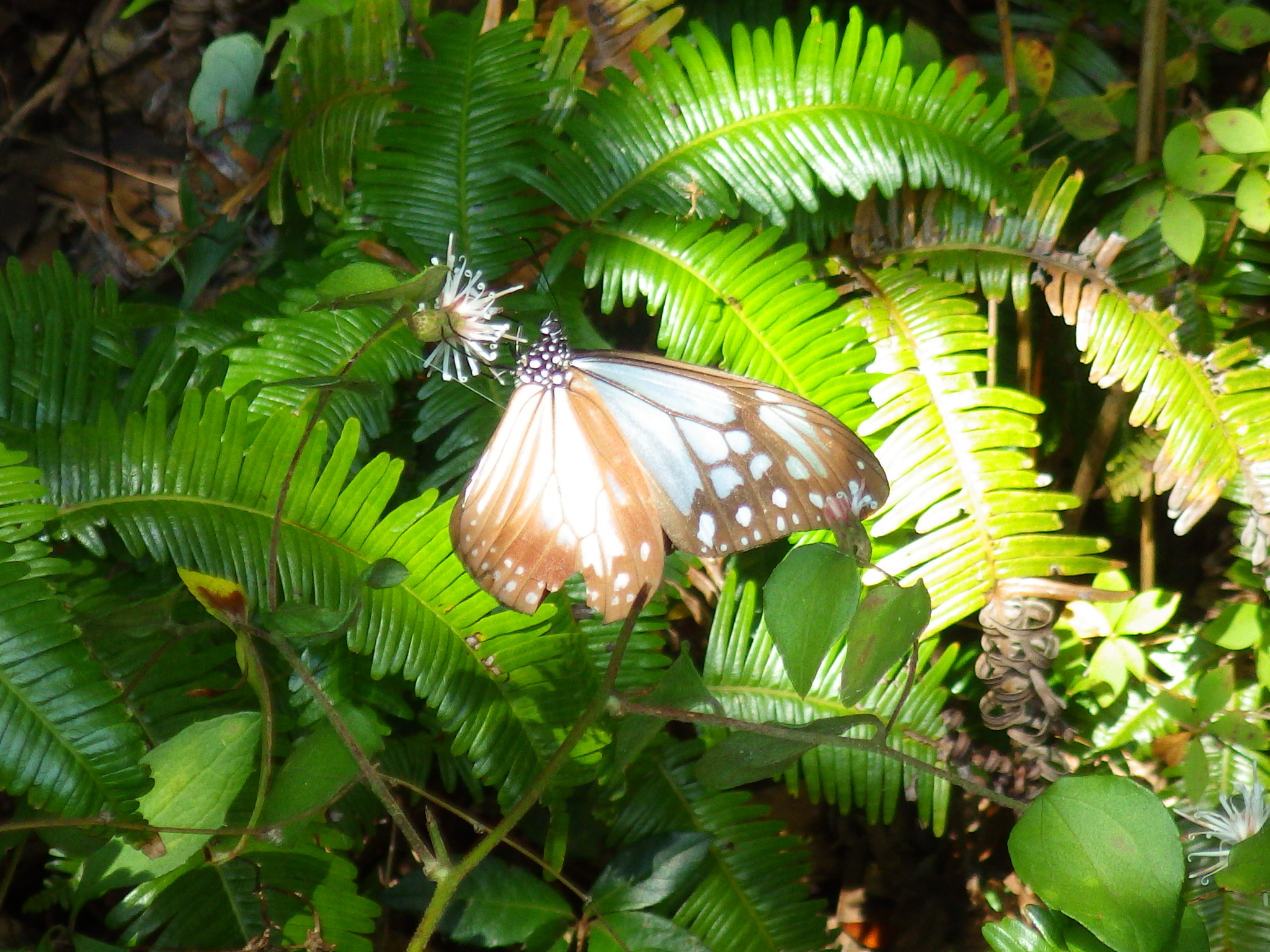
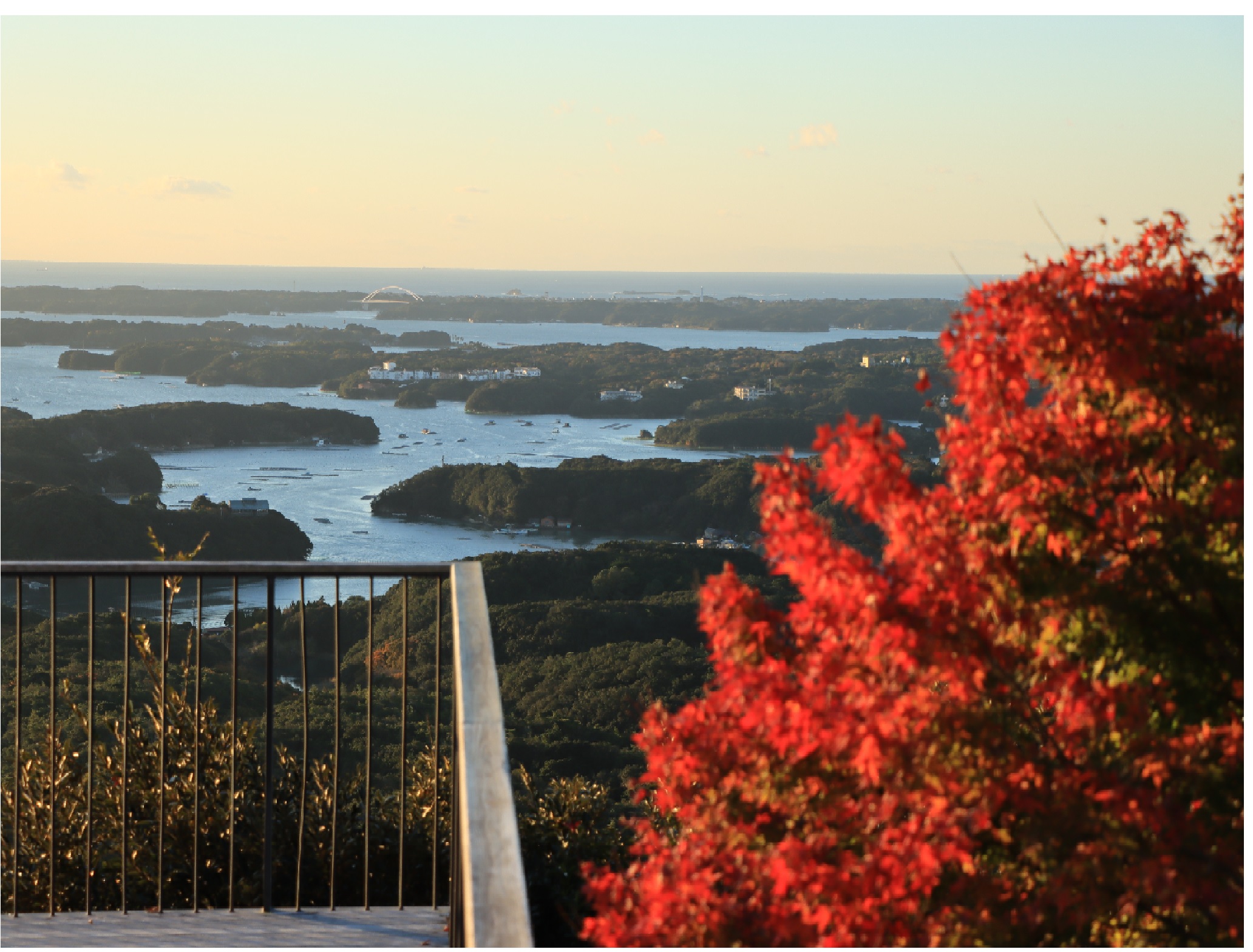


Seasons of Yokoyama: Winter
Winters are cold in Yokoyama but usually do not bring frost or snow. Though the north wind can be chilly, the Yokoyama View Point area is shielded from the worst of it by the mountain itself.
The crisp, clear winter air enhances the views from the hillside decks and terraces. The far ocean horizon, normally hazy in summer, is a sharply defined line. On the clearest mornings, even distant Mt. Fuji is visible from Fuji Lookout.
By winter, the deciduous trees have shed many of their leaves, and it is easier to see the small groups of birds that move through the branches together in search of food. Birds from different species band together at this time of year, among them Japanese white-eyes (mejiro), long-tailed tits (enaga), and Japanese pygmy woodpeckers (kogera). Dedicated birdwatchers often use the shelter at the entrance to Sozo-no-Mori, which has a clear view of the trees in the Cherry Blossom Garden. In winter, ospreys (misago) are sometimes seen from the observation decks.
In early winter, sasanqua camellias (sazanka) bloom near Yokoyama Tenkū Café Terrace, only to fall as the season grows colder. Sozo-no-Mori is home to other plants that flourish in winter, including common camellias (yabu tsubaki) and false holly (hiiragi).


